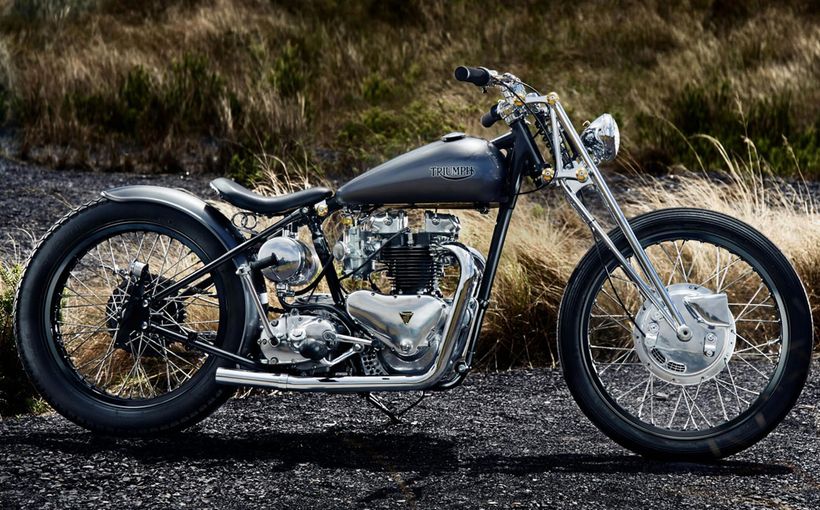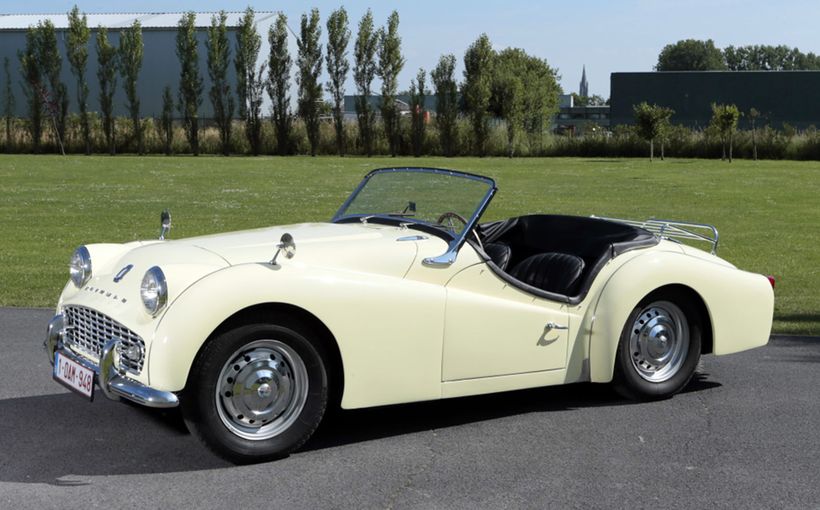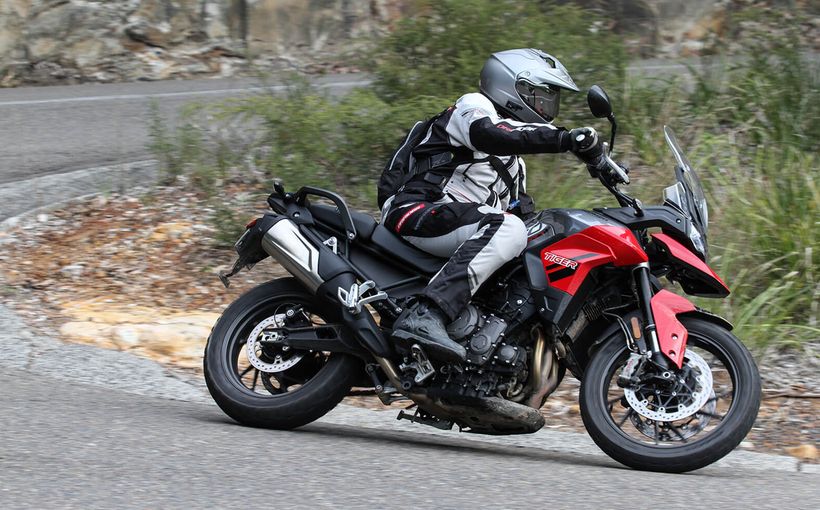2020 Triumph Tiger 900 GT Pro: Cat amongst the pigeons

Words Nigel Crowley | Pictures Nigel Paterson
Adventure bike sales have gone nuts over the last few years right around the world and the manufacturers have responded with new, cutting-edge bikes. Triumph has responded by building a new range of Tigers aimed at gaining a good slice of that market, but it’s gonna be tough; there’s a pack of ruthless middleweight Adventure-class bikes all vying for the same tasty slice of your disposable income.
The list of bikes in this category is long and varied, many manufacturers having one or even two things to offer: BMW F 850 GS and F 750 GS, KTM 890 Adventure and Adventure R, Yamaha Ténéré 700, Honda Africa Twin, Suzuki V-Strom, Ducati Multistrada 950… it goes on. Notice anything about that list? They’re all twins, which we’ll come to in a bit.
The model we had on test was a GT Pro. For 2020 Triumph has dumped its confusing naming convention from the outgoing 800s which, with all those upper and lower case Xs and Cs flying around, I could never be bothered to file away in my tiny noodle.
In essence, there are now only two things to remember: the road-orientated versions of the Tiger are the GTs and the more off-road-focussed machines the Rally, both variants also having a more up-spec Pro version. Simple. (There’s also a basic model just called the Tiger 900 being sold overseas, but we’re not getting that on in Australia.)
Changes from the 800 are many and varied, this bike being almost entirely new, but without doubt the most significant of these is the engine, which has undergone a complete and quite radical re-working both internally and externally.

MORE GRUNT
At 888cc, the new bigger-bore motor makes 10 per cent more peak torque (87Nm) at less revs and right across the dial than the outgoing model. Although it produces almost identical maximum power as the 800, it delivers more of it lower down, the real sweet spot being between about 5000 and 8000 rpm. Revving this bike to the redline is a pretty pointless activity as the power curve flatlines dramatically at the top. You’re much better served by keeping it planted somewhere between those two figures and surfing the glorious midrange.
Externally the motor is smaller than the old one and, with a reduced oil capacity, the sump is now significantly shallower too. In turn this allows the unit to be mounted lower in the frame by 42mm and rotated 6.8 degrees forward to improve weight distribution, balance and agility. Riding it back-to-back with an 800, it’s easy to feel the benefits of this.
Remember what we said about twins earlier? Well what Triumph has done is re-engineer the current triple layout to mimic one, achieved in part by incorporating what it’s calling the T-plane crank. This goes hand-in-hand with alterations to the engine’s firing order to create a motor that feels utterly unlike the previous incarnation. Bear with me through the maths.
On the old model the cylinders fired off sequentially at 240-degree intervals, giving that super-smooth seamless shove Triumph triples are renowned for. The new crank has the crank-pins spaced at intervals of 90 degrees (in the shape of a T when viewed end-on) and the firing order is now 1, 3, 2. In effect, this gives firing intervals of 180-270-270 degrees. Put simply, this gives one short gap and two long gaps between firing pulses. The upshot of this is that the motor behaves a lot more like it has two cylinders rather than three and, just like any well-sorted big twin, feels like it’s hardly trying while simultaneously going like stink.
Jumping between the 800 and the 900, your seat-of-the-pants timing lights will tell you that the old one accelerates harder off the line, but in reality the 900 will get to 60mph (or 96km/h if you prefer) nearly a full second quicker than the previous-model, category-leading acceleration. Its excellent turn of pace isn’t harmed by the standard bi-directional quickshifter, which makes pinning it through the box a rapid and seamless process (the downshift is a lot less fluid, though, I have to say). Additionally, in a sixth-gear roll-on, it will beat the previous model by more than two seconds thanks to all that extra grunt coupled with a 5kg weight saving (2.5kg from the motor alone). According to Triumph, the new engine characteristics offer more tractability at low revs and improved rider connection between the rear wheel and the twist grip (both handy on the dirt) as well as more refined on-road performance (read: easy to ride) and more character (read: lumpier), and makes a bloody good noise too. It’s a super-smart piece of engineering that has radically changed the way this bike feels and behaves.

ELECTRONICS AND CUSTOM SETTINGS
Jumping on this bike for the first time you can’t help but be struck between the eyes by the massive new TFT screen which, at seven inches across, dominates your view. There’s an enormous amount of information and bike adjustment capability hidden in there which (to begin with) can seem a little daunting. Before you even get into the guts of it, there are four possible display styles and four colours to choose from. Version four became my go-to, which basically splits the screen down the middle with speedo-revs-gear on one side and pretty much everything else on the other. Since the advent of TFT displays I’ve oft opined that the information on show should be rider customisable and with the Tiger it is. This includes being able to hide the aforementioned colour options, unwanted layout choices, phone contacts and call information, music volume and even the somewhat gimmicky GoPro controls. The upshot of this is you can navigate more quickly to things you actually want to see when scrolling with your left thumb. Talking of navigation, there’s also a turn-by-turn map display on both Pro models, available as an add-on for the others, through the My Triumph app.
Exclusive to the GT Pro there is electronically controlled rear suspension which enables the rider to choose from four increasing levels of spring preload depending on whether you’re riding solo, solo with luggage, two-up or two-up with luggage as well as nine levels of rebound damping from Comfort to Sport. Even solo I preferred the stiffer “solo with luggage” setting and the maximum rebound available for better behaviour and feel in the corners, but if I were planning a full day on the freeway, it’s the work of seconds to turn the bike into a plush armchair. The forks have old-fashioned clickers, though, and I wouldn’t bother overmuch adjusting them once you have the feel and ride you want. In my case this was almost full compression damping on the left leg and a few clicks off max rebound on the right.
Naturally there are multiple riding modes, all with pre-set values for traction control and cornering ABS, as well as Off-Road and Rider-configurable modes which allow you to disable those. If you’ve switched off the ignition it won’t restart in a mode with ABS disabled and if you don’t press the appropriate button quick enough it will default back to Road mode. Tiny bit annoying.

ERGONOMICS
Ergonomically this thing is absolutely spot on. The seat isn’t too high at 830mm and you can drop it another 20mm if you need to. The plush saddle is narrow where you sit and the pegs and ’bars perfectly positioned for my six-foot frame whether seated or standing. The height-adjustable screen and static side-deflectors do a superb job of putting you in an area of still air and, on its tallest setting, enable you to ride comfortably at freeway speeds with your visor open. Be aware wind pressure makes it really hard to alter the screen height at those speeds so adjust it before the end of the on-ramp.
Adding to the weather protection, the knock-on effect of splitting the radiator down the middle has made the bodywork wider in front of your knees and with the hand-guards also doing their part, you’re as cosy as can be. With three-position heated grips hot enough to whip up a Full-English and independently heated pillion and passenger seats (which make you feel a bit like you’ve wee’d in your wetsuit), this really is an all-weather, all-season bike and will extend the ability to wear summer riding gear considerably.
EATING LONG DISTANCES
As soon as you let the clutch out, this feels like a bike you could ride all day and first impressions ain’t deceiving. It’s interesting to note that as the lever gets to the bite-point, the engine automatically adds on about 500rpm without you even touching the throttle. The cynic in me suggests that’s because the new lumpy firing order makes the bike more prone to stalling at very low speeds, but either way it’s a nice touch.
To help you make the most of the long-distance comfort, there’s also a superb one-touch cruise control and when in use I often saw the instantaneous fuel usage fall below 3.5L/100km on the motorway — impressive. With a 20-litre tank and an average across a couple of weeks of 5.4L/100km you can see how far this will get you between refills if you need to stretch it.

BLACK STUFF AND GRAVEL
So, as the GT is the more road-biased version, we gave it a proper workout on the black stuff and it proved to be incredibly versatile. The dual-compound Metzeler Tourance NEXT tyres have enough grip and feedback to let you destroy footpegs in the curves and still offer excellent wear rates in the centre of the tread. They’re also designed for reasonable dirt road work too.
The bike is superbly well balanced, feels amazingly agile and the steering is light yet neutral, allowing you to really throw this about. The suspension dealt with irregular and bumpy surfaces with aplomb, even when cranked to the edge of the rubber, and hitting big bumps while sparking a hero blob failed to induce any wallow. The Brembo Stylema brakes are utterly fantastic and bury this into the tarmac when used in anger. They must surely be among the best in this class. If you’re in a racy mood you can smash up and down the box with the quickshifter, but if you’re not, simply relax, stay in a tall gear and drive it off the midrange.
The all-LED headlights (including DRL) are very good, with full beam producing a piercing horizontal pattern, and the extra foglights help fill in the bits nearer you. However, like most bikes these days, your cornering ability is somewhat compromised where there are no street lights as the beam dips below the inner kerb when cranked over. You can also dim the screen (or get it to do so automatically) and the back-lit switch blocks are very handy. As we said, comfort is never in question, no matter how far the journey or in what conditions, and it makes an excellent commuter to boot. Take all the boxes: tick all the boxes.
And finally, Fun Fact: The collective name for tigers is an ambush … cool huh. You could argue that with such a well-thought-out bike, with so many excellent standard features, so much useful tech, incredible build quality and at this price point, that’s exactly what Triumph has done to the competition.



ACCESSORIES
Triumph Australia supplied the test bike fitted with the Trekker accessory pack – capacious Givi manufactured hard luggage and a bolt-on screen extender which, unless you're a giraffe, seems wholly unnecessary: we took it off anyway as the bracket was annoyingly in my eye-line. At 52 litres the top box is big enough to house three uni students or two full-face helmets and the unequal sized bags (to accommodate the silencer on one side) stick out enough to pose a serious extinction threat to wing-mirrors: good job they take about two seconds to remove for commuting duties. There are of course more accessories available for the Tiger than grains of sand on Bondi so check them out at Triumph’s web site.

THE RALLY
If you’re more serious about getting off the beaten track then perhaps look at either of the Rally variants of the Tiger.
Better equipped to handle more extreme off-road terrain than either of the GT models, the Rally models are designed to take you anywhere your skills can manage. As with the GT you have two versions to choose from depending and your needs and wallet: the Rally and the Rally Pro which are $20,150 and $22,550 (plus on roads) respectively.
One of the biggest differences between these and the more road focussed GTs is the suspension. Where the GT wears Marzocchis the Rally versions are equipped with fully adjustable Showa gear and offer tons more wheel travel: 60mm extra front and rear at 240 and 230mm respectively. No electronically adjustable preload on these models though, that’s exclusive to the GT Pro. The other major difference between the GT and the Rally is front wheel size, the latter wearing a tubeless, spoked 21-inch job although the rear stays at 17-inches. As you might expect with the longer suspension the seat height is much higher on the Rally at 850mm in its lowest position and 870 the highest. The tank and seat are narrower than on the previous 800 though so reaching the ground is less of a problem and allows for better control and manoeuvrability when standing up on the dirt. Tyres are also more dirt focussed with Pirelli Scorpion Rally fitted rather than the Metzeler Tourance of the GT. Apart from a few extra kilos, re-positioned footpegs and slightly wider ’bars the Rally versions share pretty much all their other dimensions with the GT. The Rally Pro alone of all the Tigers has six riding modes (two more than the standard Rally) the inclusion of the Off Road Pro mode allowing the rider to disable ABS and TC. If you are planning some serious adventures in the dirt it might be good to know that this year’s Tiger has a redesigned airbox too, meaning it’s much simpler to swap out the air cleaner: handy if it’s full of Nullarbor. What’s more you get some pretty serious crash bars, a metal bash-plate rather than the plastic (mainly for show) version fitted to the GT. Colours available are the same as the GT except you get Matt Khaki rather than the red and the Rally exclusively gets a white painted frame inspired by the Tiger Tramontana rally bike… apparently. Looks pretty cool though. With it’s lanky suspension and tall front hoop the Rally really does look the off-road weapon. Good to know it shares all the same thoughtful inclusions as the GT to help make it an excellent road bike too, including all the heated bits, cruise control, quick shifter and wind protection. What's more if you do manage to have a stack (not unheard of when the going gets gnarly) and damage the subframe, you can now just bolt on a new one as it's not welded to the main frame like the 800 – that’s Triumph responding directly to customer feedback.
COMPETITION

The more road-oriented version is lighter, friendly, easy to ride and an inexpensive entry into European motorcycling.

Ride Away Versatility is the name of the game with Ducati’s Multistradas and the 950 has made a lot of friends with its user-friendly nature.

Offering more grunt and better suspension than the outgoing 790, this new-for-2021 model looks capable both on bitumen and gravel. Expect similar pricing to the Tiger.
SPECIFICATIONS – 2020 Triumph Tiger GT Pro
ENGINE
Type: Liquid-cooled, 12 valve, DOHC, in-line 3-cylinder
Capacity: 888cc
Bore x stroke: 78 x 61.9mm
Compression ratio: 11.27:1
Engine management: Multipoint sequential electronic fuel injection
PERFORMANCE
Claimed maximum power: 93.9 bhp (70 kW) @ 8,750rpm
Claimed maximum torque: 87 Nm @ 7,250 rpm
TRANSMISSION
Type: 6-speed gearbox, quickshifter
Final drive: Chain
Clutch: Wet
CHASSIS AND RUNNING GEAR
Chassis: Alloy modular frame with bolt-on rear sub-frame and pillion hangers
Front suspension: Marzocchi 45mm USD cartridge forks. Manual adjustment of compression & rebound damping. 180mm wheel travel
Rear suspension: Marzocchi rear shock, electronically adjustable for preload & rebound damping. 170mm wheel travel
Front brakes: Twin 320mm floating discs, Brembo Stylema 4 piston Monobloc calipers. Radial front master cylinder, Optimised Cornering ABS
Rear brake: Single 255mm disc. Brembo single piston sliding caliper. Optimised cornering ABS.
Tyres: Front: 100/90-19. Rear: 150/70R17
RIDER AIDS & CONVENIENCE FEATURES
– LED lighting
– Mobile phone storage and charging
– TFT Instruments, Bluetooth Connectivity, navigation and GoPro connectivity
– Illuminated switches
– Cruise Control
– Heated handgrips, seat
– Four riding modes
– Cornering ABS and IMU
– Tyre Pressure monitoring
DIMENSIONS AND CAPACITIES
Rake: 24.6°
Trail: 133.3mm
Claimed dry weight: 196kg
Seat height: 810-830mm
Wheelbase: 1556mm
Fuel capacity: 20 Litres
ETCETERA
Price: From $24,150 Ride Away
Colours: Korosi Red, Sapphire Black and Pure White
Test bike supplied by: Triumph Australia
URL: https://bit.ly/3dY9RC6
Warranty: 2 years, unlimited kilometres









